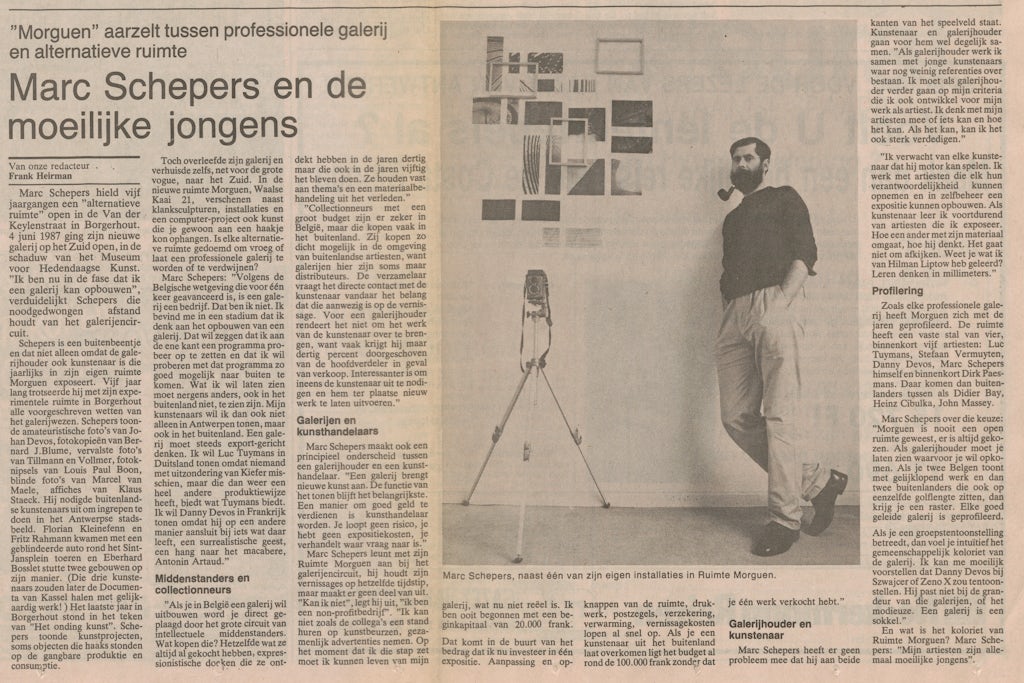Jef Lambrecht’s Legacy
There are several reasons for the decision to include Jef Lambrecht’s artistic oeuvre/legacy as a case in the archival activities. To begin with, it is a classic case in which valuable material and information was left in a precarious state after the death of the artist and required temporary storage. Secondly, it concerns a whole grown organically, that could more or less be considered complete. Provided it is organised and accessible, it provides a valuable overview of a major period. As an oeuvre, it is a good match for the M HKA collection.
Jef Lambrecht represents what could be described as the anti-establishment generation. As a student in Leuven during the turbulent student revolts of 1968, he closely followed the developments of the post-war generation. His work on Provo Anarchism 1965-67 sets an important benchmark against which many of his activities can be compared and provides an excellent key for unlocking an incredibly diverse oeuvre. His work can be seen as committed and critical.
The fact that, as a practising artist as well as a neutral reporter, he was able to chart his time thoughtfully and clearly is an added bonus. His legacy is a journey through vital key moments of the art happenings and artists of his time, which he, as a result, subjectively and objectively knew about and attended. Like many of his generation, ‘doctoring’ his own career was not an issue, and so far, scant public work has been done on an overview. Jef Lambrecht did keep ‘everything’ and also dated much of it, so that reconstruction in a more archaeological sense is possible.
Jef Lambrecht’s legacy is also of interest for the (emergency) archival activities, because it is packed with challenges that are only discovered during processing. Only a fraction of the material conforms to the German Industry Standards (DIN), which means that the traditional archive racks are only partially usable. Improvisation is necessary. He uses so many different materials that a systematic approach is nearly impossible. Like the entire ‘post-Duchampian’ generation, any object or material was acceptable as art, leading to significant headaches on the part of the curator. Jef Lambrecht uses both noble and totally unstable materials, formats, objects, methods, etc. combined in a complex conceptual relationship that goes beyond traditional boundaries. It is also an interesting test case for the collaboration of the Flemish Platform for Art Heritage. In addition to visual work and artistically oriented performances, he also wrote more classical theatre scripts, poetry as well as voluminous books on e.g. the Middle East problem, not to mention his journalistic work and cultural reports for television, etc.
Following the agreement with the administrators of the artistic legacy – the non-profit association Samarkand – a valuation and a brief description of the archive were drawn up and a transfer was organised based on these. The bulk of the material was delivered to the CKV archive at M HKA in two trips. There it was dusted as thoroughly as possible, rearranged and stabilised prior to its registration and documentation. The latter activities have only just begone because the challenges mentioned were greater than initially anticipated, and the space available to the CKV for initial processing weren’t sufficiently conducive to making efficient progress. (shared areas with the museum – it goes without saying that current exhibitions take priority)
(CS)


